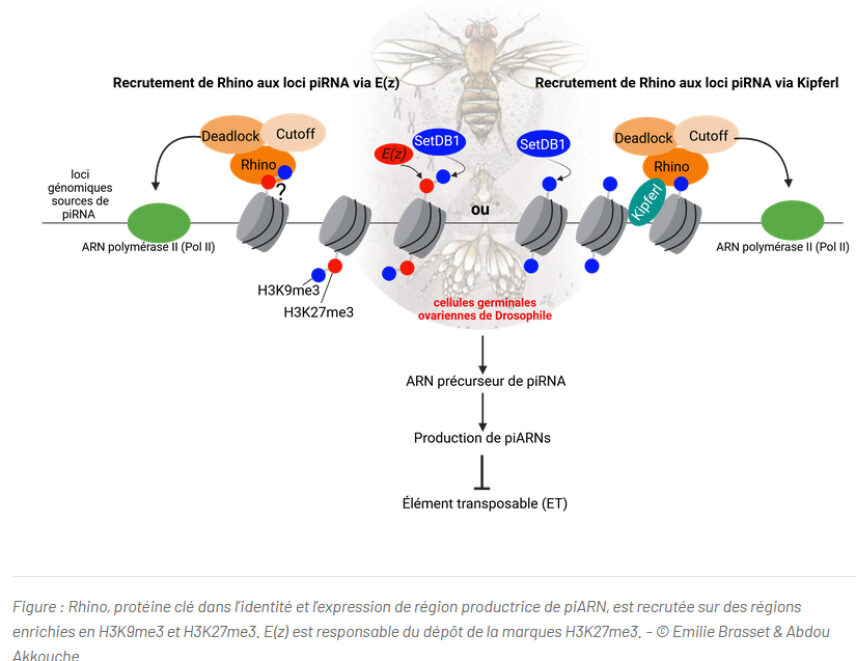News
A dual-lock system to keep jumping genes in check
The DYET team, in collaboration with the University of Cambridge, has uncovered a new epigenetic mechanism that controls “jumping genes”—mobile DNA elements whose activity can threaten genome integrity.
Transposable elements, often nicknamed “jumping genes,” are DNA sequences capable of moving from one location to another within the genome. Found in almost all living organisms, these elements have played a role in evolution, but they can also be harmful: by moving, they risk breaking or disrupting the normal functioning of DNA. This can cause mutations, alter certain genes, and promote the development of diseases such as certain cancers.
The risk is even greater when these elements become active in germ cells (which give rise to eggs or sperm), as such anomalies can be passed on to the next generation.
To better understand how these “jumping genes” are regulated, the team led by Emilie Brasset, in collaboration with the University of Cambridge, used the fruit fly Drosophila as a model organism. They discovered a new epigenetic mechanism that helps suppress these mobile elements.
These findings were published inNature Structural and Molecular Biology.
This work, highlighted on the CNRS Biology and UCA websites, is also the subject of a “News and Views” article in the same issue of NSMB.

General
Written by Philippe ARNAUD





